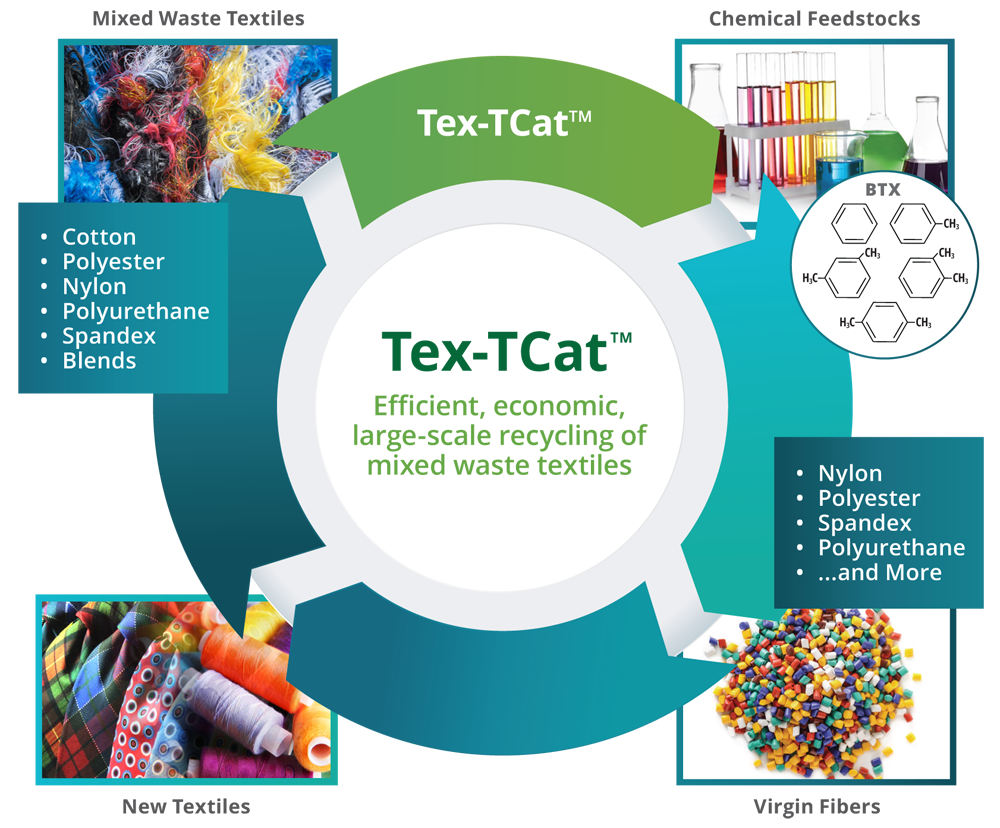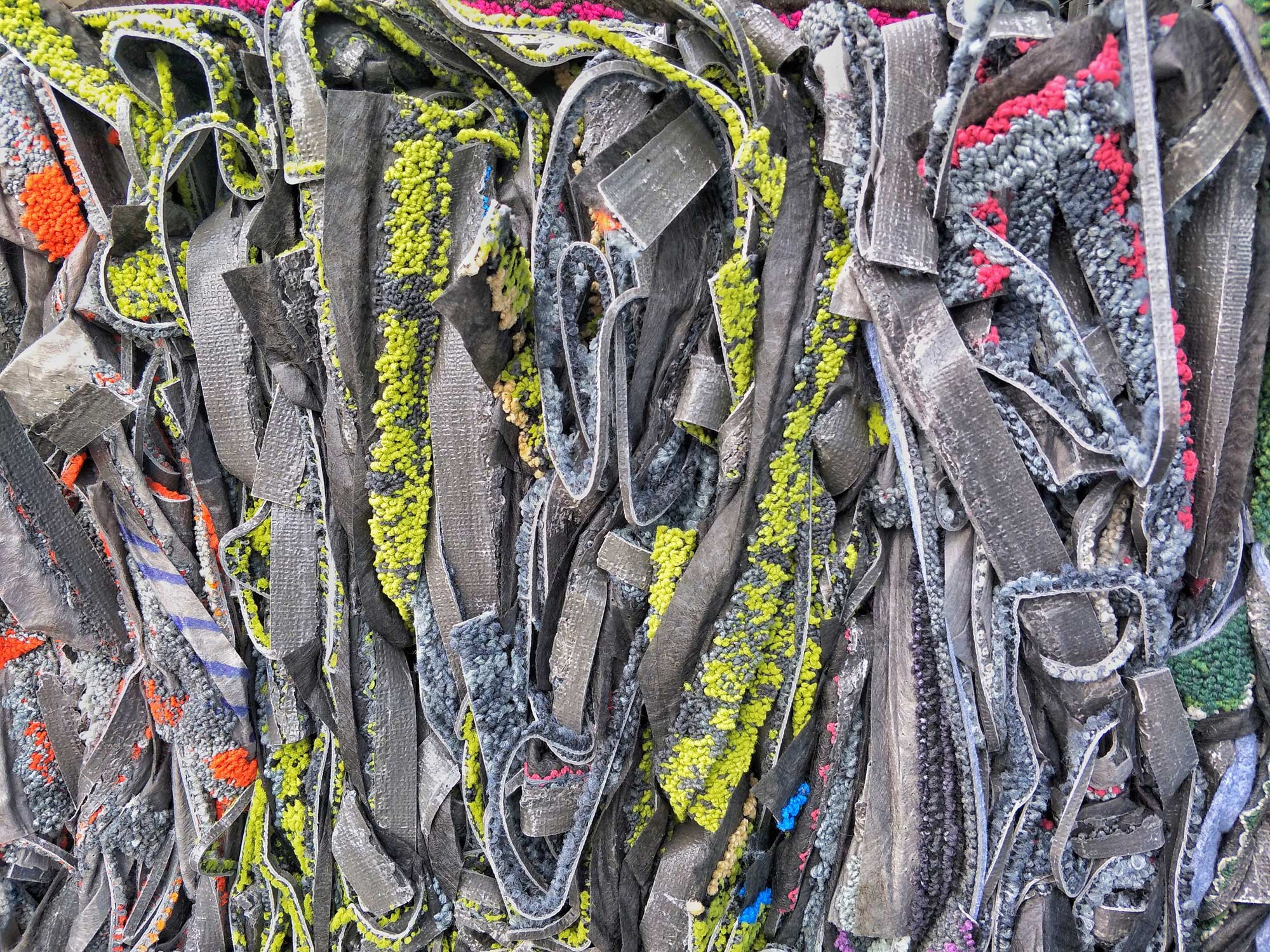
Tex-TCat™ produces aromatics via thermal catalytic conversion, directly from textile waste
Although the call for sustainable fashion is urgent, companies are struggling to find a way past the technological and economic hurdles, such as:- Lack of commercially viable recycling technologies for low-quality textiles
- Complexity to separate fiber types from the mixed blends and composite structures
- Costly recovery process and logistics
Tex-TCat™ aims to convert mixed textile waste into valuable commodity chemicals (BTX) that are now used today to manufacture virgin synthetics feedstocks. Tex-TCat™ expects to do this profitably, creating a viable solution to keeping clothing out of landfills or incinerators at the end of its useful life.

Anellotech has demonstrated the lab scale conversion of cotton, nylon and polyester textiles into valuable chemicals . The Company is seeking funding partners to execute development plans leading to TCat-8 Demo plant studies to generate data for the commercial plant design.

Tex-TCat – Textile Waste Feedstock
Today, garments often end up in landfills or burned in incinerators, adding up to 92 million tons a year of post-consumer textile waste worldwide (https://www.nature.com/articles/s43017-020-0039-9). The amount of textile waste produced is rising, as people are becoming wealthier and production costs are declining due to globalization. Indeed, textile waste is expected to increase to 148 million tons by 2030.
Anellotech’s Tex-TCat can be used to recycle a broad range of natural and synthetic textiles, individually or as blends:
Non-textile components, such as plastic/polymer buttons, labels, zippers, fasteners and thread are also acceptable feedstocks.
Metallic components (zippers) can be separated pre-process using mechanical means
- Nylon
- Polyester
- Cotton
- Cotton/polyester blends
- Nylon, elastane, polyurethane, etc.
- Wool, leather, suede
- Blends of all of the above
Non-textile components, such as plastic/polymer buttons, labels, zippers, fasteners and thread are also acceptable feedstocks.
Metallic components (zippers) can be separated pre-process using mechanical means

Four Reasons why Tex-TCat is a Game Changer
- Converts a broad range of textiles (both synthetic and natural fibers) and blends into chemicals used to make synthetic textiles.
- Operate at scale. First plant will be designed to handle about 200,000 tons/year, subsequent plants can handle one million tons scale. With 148 million tons of waste textile (minimum) generated annually by 2030, this kind of scale is needed to address the problem in a meaningful way.
- Aims to operate profitably, allowing to pay for feedstock to incentivize collection from consumers.
- Anellotech licensing strategy provides for rapid global adoption once technology is proven in first commercial plant.